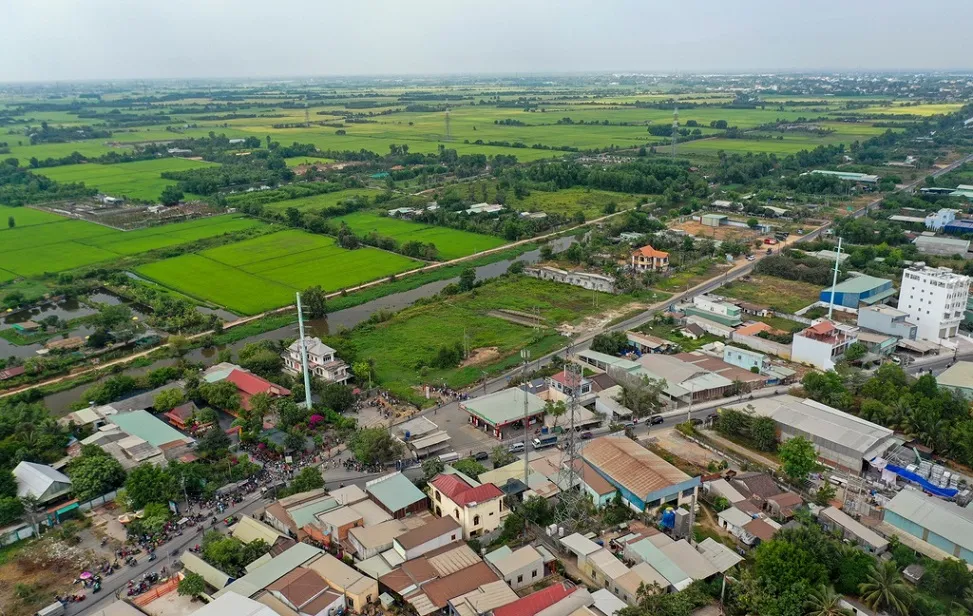
Within the realm of land management, there lies the potential for significant breakthroughs that can attract investors, ushering in a new era for the city's infrastructure, urban development, and industrial landscape.
Prominent Mechanisms in Play
In line with the principles of institutionalizing Resolution 18-NQ/TW, particularly point 2.6 which directs the improvement of legal regulations related to the real estate market, including the realm of land use rights, the Ho Chi Minh City Department of Natural Resources and Environment has proffered land-related solutions to the City People's Committee as part of a draft resolution set to supplant Resolution 54. These solutions encompass 8 land policy mechanisms and 1 environmental policy mechanism. These mechanisms bear significance as they pave the way for revenue generation for the state budget.
Several exceptional mechanisms and policies have gained approval from the National Assembly via Resolution 98 - a measure aimed at piloting distinctive mechanisms and policies for HCMC's development. Notably, the piloted measures are novel aspects within the draft Land Law (amended), currently submitted to the National Assembly for review. The Ministry of Natural Resources and Environment, the drafting authority, has also lent its support to the city's piloting efforts.
Among the noteworthy facets that have captured the attention of both the public and investors within Resolution 98 is the city's authorization to alter the purpose of utilizing rice land under 500 hectares in alignment with urban planning. It's imperative to recognize that this mechanism and policy extends from the framework previously endorsed by the National Assembly in Resolution 54/2017. Essentially, this entails a decentralization mechanism, endowing the People's Council of Ho Chi Minh City with the authority to authorize the conversion of rice land usage under the Prime Minister's purview.
Nonetheless, in accordance with the 2020 Investment Law, the scope of authority to approve investment policies for projects necessitating the alteration of the Prime Minister's designation of rice land usage has been redefined to involve tracts measuring less than 500 hectares. Consequently, an adjustment is necessary to align the former mechanism with the decentralized authority stipulated in the Investment Law. Following five years of pilot implementation, the City People's Council has endorsed 32 projects entailing a change in the usage purpose of over 10 hectares of rice land, encompassing a cumulative area of 1,843.79 hectares.
In terms of benefits, this provision aligns with the spirit of Central Government Resolutions that chart HCMC's economic growth trajectory toward a shift from agricultural to service and high-tech sectors. This transition aims to progressively transform the city into a hub of modernity, characterized by civility, dynamism, creativity, and a surplus of high-quality human resources—a beacon of digital economy leadership, comprehensive international integration, and prominence as a center for economics, finance, commerce, culture, education, science, and technology.
Empowering HCMC for Proactive Progress
To lay a solid foundation for implementing the aforementioned trajectory, it is imperative to empower Ho Chi Minh City to modify the usage of rice land under 500 hectares in accordance with urban planning. In practice, the process of converting agricultural land usage has historically encountered obstacles, especially concerning the extension of agricultural land usage rights for organizations.
Precisely, organizations receiving transfers of agricultural land for agricultural production investments are subject to expiry of the extension period, necessitating a shift to land leases (Clause 29, Article 2 of Decree No. 01/2017/ND-CP). However, for organizations that obtain transfers of agricultural land for non-agricultural production and business investments, there is no provision for extension upon agricultural land expiry. In cases where investors receive the transfer of agricultural land usage rights to implement projects but the change in land usage has yet to be formalized (no decision on land usage alteration has been made), the agricultural land tenure lapses.
The lack of explicit and concrete regulations for these scenarios has led to confusion in land procedural resolution. Furthermore, the absence of agricultural land usage rights renewal adversely impacts administrative proceedings, obstructing state entities in facilitating land procedures for individuals and businesses, thereby encroaching upon the legitimate rights of individuals possessing legal land usage rights.
Consequently, Ho Chi Minh City has proposed a mechanism and policy to address these predicaments in Resolution 98, endorsed by the National Assembly. This policy mandates that "Investors who purchase properties for sale—entailing the right to use agricultural land—from financial institutions, courts, enforcement agencies, and bailiffs to execute non-agricultural projects, yet have not initiated procedures for the State's land allocation or lease, will be entitled to an extension if the land usage term has expired.
Likewise, investors in projects that have secured the transfer of agricultural land usage rights for non-agricultural projects and are currently in the process of land allocation or lease by the State will also be granted an extension if the land usage term has expired. This extension will be effective until June 30, 2024."
The components related to natural resources and the environment within Resolution 98 were formulated by the Department of Natural Resources and Environment to propose the Government to submit to the National Assembly. This proposal rests on a foundation of thorough study and application of central orientation geared toward promoting and perfecting the decentralization and delegation mechanisms.
These mechanisms aim to distinctly define responsibilities, authority, and tasks between the Government and various ministries and branches, local authorities, all while preserving the interests of individuals and businesses. This approach bolsters innovation and creativity and fosters a strong sense of responsibility at every echelon and within every branch, particularly the leadership role.




















